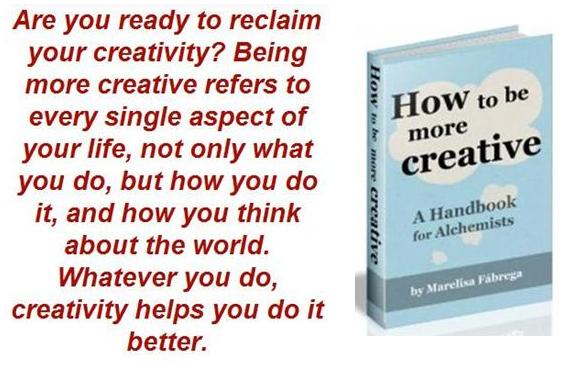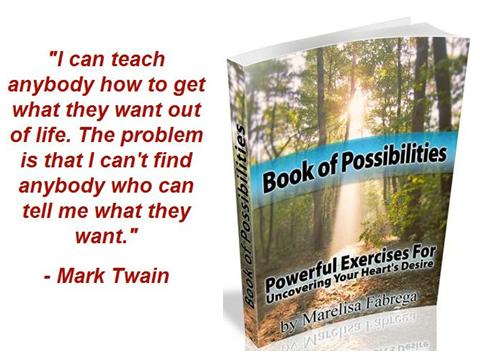 Energy is your capacity to do work. The more energy you have, the more productive you can be.
Energy is your capacity to do work. The more energy you have, the more productive you can be.
Therefore, a great way to increase your productivity is by building the reservoir of energy that you have available to you. If you put more fuel in your tank by applying strategies for boosting your energy, you’ll be able to get more done.
In this post you’ll discover 20 easy ways to boost and replenish your energy.
1. Increase your magnesium intake. New York University nutritionist Samantha Heller, MS, RD, explains that magnesium is needed for more than 300 biochemical reactions in the body, including breaking down glucose into energy. The recommended daily intake of magnesium is around 300 milligrams for women and 350 milligrams for men.
In order to make sure that you’re getting enough magnesium, Heller recommends that you do the following:
- Add a handful of almonds, hazelnuts or cashews to your daily diet.
- Increase your intake of whole grains, particularly bran cereal.
- Eat more fish, especially halibut.
 2. Eat a healthy breakfast. Studies show that those who eat a healthy breakfast each morning have more energy and stay in a better mood throughout the day than their breakfast-skipping counterparts.
2. Eat a healthy breakfast. Studies show that those who eat a healthy breakfast each morning have more energy and stay in a better mood throughout the day than their breakfast-skipping counterparts.
Aim for an energy-balancing mix of high-quality carbs, lean protein, and healthy fats. Two examples of a healthy breakfast are oatmeal with a serving of almonds, and a hard-boiled egg with a side of berries.
 3. Get active rest. In “The Power of Rest: Why Sleep Alone Is Not Enough. A 30-Day Plan to Reset Your Body”, Dr. Matthew Edlund explains that rest is a major pathway to renewal, which is a basic human necessity. Dr. Edlund makes a difference between passive rest—when your body is still, such as when you sleep or you’re vegging out in front of the TV–, and active rest. Active rest is conscious, directed, and entirely under your control.
3. Get active rest. In “The Power of Rest: Why Sleep Alone Is Not Enough. A 30-Day Plan to Reset Your Body”, Dr. Matthew Edlund explains that rest is a major pathway to renewal, which is a basic human necessity. Dr. Edlund makes a difference between passive rest—when your body is still, such as when you sleep or you’re vegging out in front of the TV–, and active rest. Active rest is conscious, directed, and entirely under your control.
By using active rest you can revive yourself when you’re exhausted, or relax when you’re stressed, in as little as 30 to 60 seconds. Here are some examples of active rest which Dr. Edlund recommends:
- Stand up and practice mountain pose. Do the following: align your ankles, knees, hips and shoulders along the same imaginary line, breathing in deeply and slowly; hold that pose for five long breaths..
- Try paradoxical relaxation: concentrate on the small muscles in your face and head. Note one that is slightly more tense than the one next to it. Pay complete attention to this muscle for 30 seconds, feeling and sensing it alone; this will then get the rest of the body to relax.
Instead of just relying on the sleep that you get at night in order to get the rest that you need and recharge your batteries, try the active rest exercises suggested by Dr. Edlund and feel yourself filling up with energy.
4. Work on something that you’re passionate about. To quote Oprah Winfrey: “Passion is energy. Feel the power that comes from focusing on what excites you.”
5. If you feel your energy level dropping, go for a brisk walk. Physical activity oxygenates blood cells, helping to refill your body’s fuel tank.
 6. You’ve probably heard that thirst can masquerade as hunger. But did you know that it can masquerade as fatigue as well? Make sure that you keep a water bottle with you at all times and that you take frequent drinks from it throughout the day.
6. You’ve probably heard that thirst can masquerade as hunger. But did you know that it can masquerade as fatigue as well? Make sure that you keep a water bottle with you at all times and that you take frequent drinks from it throughout the day.
As an additional tip, try drinking water as soon as you wake up each morning. Your body is dehydrated after a long night’s sleep, and drinking water will help you to wake up and will make you feel refreshed.
7. Splash some water on your face for a quick pick-me-up.
8. Check your attitude. A negative attitude that keeps you focused on everything that isn’t going exactly as it should, and that is constantly scanning the horizon for possible problems, is a huge energy drain.
9. Use your physiology. Sit up straight instead of slumping in your chair, and walk with purpose instead of dragging yourself around.
 10. Have a good laugh. Laughter releases feel-good hormones into the blood stream and boosts your energy level.
10. Have a good laugh. Laughter releases feel-good hormones into the blood stream and boosts your energy level.
11. Stress is one of the biggest energy zappers that there is. Find ways to de-stress, such as taking up Yoga, meditation, Qigong, or Tai Chi. You can try mini-meditations if you just have three minutes to spare here and there. Here’s a mini-meditation recommended by Deepak Chopra:
- Sit comfortably and close your eyes. Open your hands and place them palms up on your knees.
- Breathe in deeply and say to yourself “I” as you breathe in.
- Breath out and say to yourself “am” as you breathe out.
- Do this for three minutes.
12. Eat vegetables with energy-revitalizing antioxidants with your lunch and dinner. These include tomatoes, carrots, and spinach.
13. Andrew Weil, M.D., a world-renowned pioneer in the field of integrative medicine, explains that mindful breathing can be energizing. One of the breathing exercises that he recommends is called “4-7-8″. Simply place the tip of your tongue against the ridge of tissue just behind your upper front teeth, and keep it there through the entire exercise.
Then follow these steps:
- Exhale completely through your mouth, making a whoosh sound.
- Close your mouth and inhale quietly through your nose to a mental count of four.
- Hold your breath for a count of seven.
- Exhale completely through your mouth, making a whoosh sound to a count of eight.
Repeat the cycle three more times for a total of four breaths. Note that you always inhale quietly through your nose and exhale audibly through your mouth. The tip of your tongue stays in position the whole time. In addition, exhalation takes twice as long as inhalation.
 14. Have a power snack. Have a snack mid-afternoon that combines protein, a little fat and some fiber. One option is to make yourself a peanut butter and banana smoothie. Here are the ingredients:
14. Have a power snack. Have a snack mid-afternoon that combines protein, a little fat and some fiber. One option is to make yourself a peanut butter and banana smoothie. Here are the ingredients:
- 1 small ripe banana, sliced
- 2 tablespoons peanut butter, creamy
- 1 tablespoon honey
- 1 cup cold milk
To prepare the smoothie, put the banana slices, the peanut butter, and the honey in a blender; blend until smooth. Then add the milk and blend until foamy. Voilá! You have a delicious and healthy snack which will help you to keep your energy level high.
15. Your thoughts can either give you energy or deplete you of energy. Don’t wallow in emotional states that zap your energy. These include:
- Worry.
- Resentment.
- Anger.
- Regret.
- Feeling sorry for yourself.
16. Listen to your favorite upbeat song.
17. Call a friend who’s cheerful and full of energy. Some of their positive energy will rub off on you, leaving you feeling energized and ready to tackle the world.
 18. Coffee doesn’t deserve the bad rap it gets. However, stop downing giant to-go cups of coffee. Instead, drink half a mug of coffee (4 to 6 ounces) every few hours. Researchers found that shift workers, medical residents, truck drivers, and others who work odd hours got a better boost from caffeine, and performed better on cognitive tests, when they drank it in small portions .
18. Coffee doesn’t deserve the bad rap it gets. However, stop downing giant to-go cups of coffee. Instead, drink half a mug of coffee (4 to 6 ounces) every few hours. Researchers found that shift workers, medical residents, truck drivers, and others who work odd hours got a better boost from caffeine, and performed better on cognitive tests, when they drank it in small portions .
19. Try something new. When people do something novel, the brain releases its reward chemical: dopamine. Dr. Gregory Berns, M.D., a neuroscientist at Emory University, in Atlanta, explains that studies have shown that dopamine is also a motivating chemical that gears us up to do more. That is, by doing something new you may be inspired to take on more projects.
20. Have something to look forward to. Working on tasks that you don’t enjoy can drain your energy. One way to get yourself through these tasks is to have something to look forward to once you’re done. The anticipation created by scheduling something that you enjoy at the end of the day can give you the energy that you need to get through the dull work.
Conclusion
Energy is the fuel of life. The more energy you have, the greater will be your ability to achieve what you want and to go after your dreams. Apply the 20 strategies set forth above for increasing your energy and be unstoppable.



Related Posts:
1. 21 Ways to Keep Your Motivation Flying High
2. 14 Ways to Harness the Power of Enthusiasm
3. 24 Surefire Ways to Get Your Mojo Back
4. 12 Tips for Defeating Procrastination and Gearing Up for Action
Did you enjoy this article? Subscribe to “Daring to Live Fully” by RSS or by email, and get free updates.


























































 Marelisa Fabrega is a lawyer and entrepreneur. She holds a Bachelor of Science in Business Administration from Georgetown University in Washington, D.C., as well as a Juris Doctor from the Georgetown University Law Center. You can learn more about her
Marelisa Fabrega is a lawyer and entrepreneur. She holds a Bachelor of Science in Business Administration from Georgetown University in Washington, D.C., as well as a Juris Doctor from the Georgetown University Law Center. You can learn more about her 





